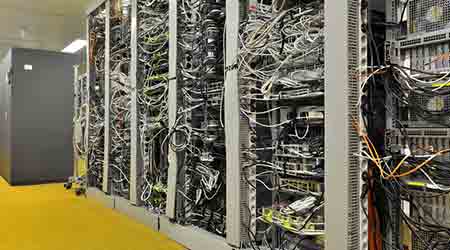 When adding backup power capacity, facility managers should look beyond today’s needs and consider what technology the data center will have to support in the long-term.©Jdanne
When adding backup power capacity, facility managers should look beyond today’s needs and consider what technology the data center will have to support in the long-term.©JdanneBring in IT Early and Often When Commissioning New Power Reliability Equipment
Third part of a four-part article on best practices for adding power in data centers.
The case for commissioning new power reliability equipment in a data center is, for a facility manager, simple common sense. And safety considerations may call for the data center to be taken offline when the power infrastructure is being upgraded. But sometimes those facility priorities run into a brick wall: The IT department says no.
It’s not necessarily a question of IT being bullheaded. In fact, they may have a perfectly valid concern, says Scott Offerman, managing director, global occupier services, Cushman & Wakefield. “A lot of our data centers are running old servers — for all the right reasons,” he says. “They can’t be replaced and they can’t be repaired.” If they lose power, they may never start up again. So from an IT perspective, power has to be kept on.
What should be done? That’s a business decision, because there are costs. Suppose a data center is adding a third generator, to run in rotation with two older units. “If I’m adding a generator, I want to know, not only is that generator going to work, but what happens when that generator is working and one of my older generators turns off,” Offerman says. Ideally, a commissioning agent would physically turn the generators on and off, to make sure that, for example, if generator 1 fails, generator 3 picks up the load.
“That’s the commissioning step that people are really scared of,” Offerman says. “Nobody’s got the courage to walk over and flip the switch.”
The problem is that, in a few months or a few years, if the utility power is lost and the generators kick in, no one knows for sure if they’re going to work the way they were designed to work. And if there is some undetected anomaly, the data center may go down.
There are ways to address that situation — for example, putting the new generator on its own bus, so that commissioning won’t affect the live data center load — but those steps can have budget and other impacts. The facility manager’s job is to lay out the options, and the costs and risks involved with each. It’s up to the business unit to make the decision.
Similar considerations can arise when the facility manager needs to de-energize power equipment in order, for example, to add a transformer or tie in a new generator. One way to handle that without taking the whole data center down may be to bring in a rental generator. But the middle of a construction project is not the ideal time to tell top management that the project budget will have to be increased; that decision should have been made during the planning process.
“When you’re looking at adding power, it’s very important that you understand the current operation, the current constraints on that operation, and how the new equipment is going to be joined in with the existing power equipment,” Offerman says. “You need to understand all that, not just from the design perspective, but from the operational perspective as well.”
Related Topics:















